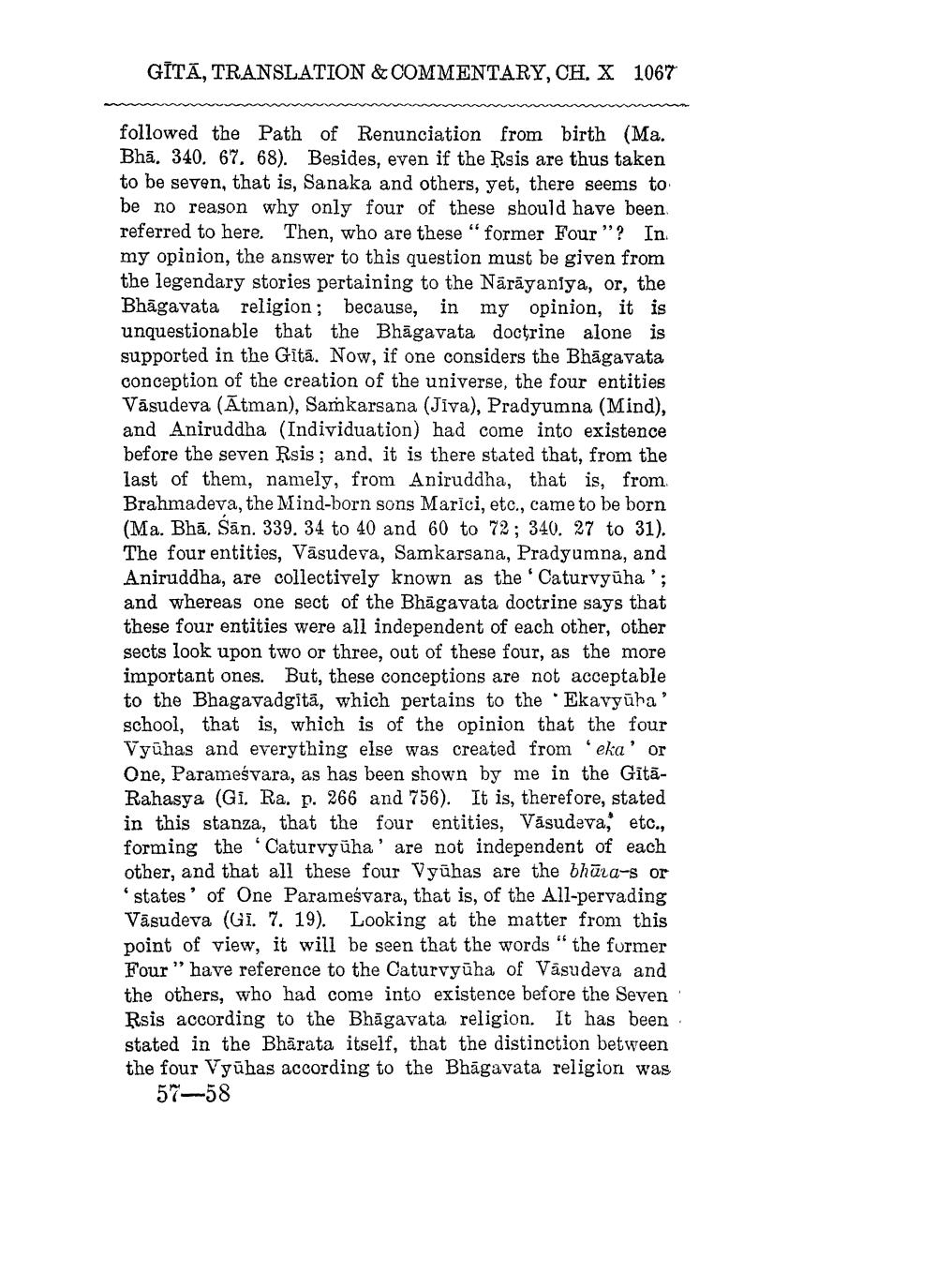________________
GITA, TRANSLATION & COMMENTARY, CH. X 1067
followed the Path of Renunciation from birth (Ma. Bha, 340. 67. 68). Besides, even if the Rsis are thus taken. to be seven, that is, Sanaka and others, yet, there seems to be no reason why only four of these should have been. referred to here. Then, who are these "former Four"? In. my opinion, the answer to this question must be given from the legendary stories pertaining to the Näräyaniya, or, the Bhagavata religion; because, in my opinion, it is unquestionable that the Bhagavata doctrine alone is supported in the Gita. Now, if one considers the Bhāgavata conception of the creation of the universe, the four entities Vasudeva (Atman), Samkarsana (Jiva), Pradyumna (Mind), and Aniruddha (Individuation) had come into existence before the seven Rsis; and, it is there stated that, from the last of them, namely, from Aniruddha, that is, from Brahmadeva, the Mind-born sons Marici, etc., came to be born (Ma. Bha, San. 339, 34 to 40 and 60 to 72; 340. 27 to 31). The four entities, Väsudeva, Samkarsana, Pradyumna, and Aniruddha, are collectively known as the 'Caturvyüha '; and whereas one sect of the Bhagavata doctrine says that these four entities were all independent of each other, other sects look upon two or three, out of these four, as the more important ones. But, these conceptions are not acceptable. to the Bhagavadgita, which pertains to the Ekavyūba school, that is, which is of the opinion that the four Vyūhas and everything else was created from 'eka' or One, Paramesvara, as has been shown by me in the GitaRahasya (GI. Ra. p. 266 and 756). It is, therefore, stated in this stanza, that the four entities, Vasudeva, etc., forming the Caturvyuha' are not independent of each other, and that all these four Vyūhas are the bhua-s or
states of One Paramesvara, that is, of the All-pervading Vasudeva (GI. 7. 19). Looking at the matter from this point of view, it will be seen that the words "the former Four" have reference to the Caturvyuha of Vasudeva and the others, who had come into existence before the Seven Rsis according to the Bhagavata religion. It has been stated in the Bharata itself, that the distinction between the four Vyūhas according to the Bhagavata religion was 57-58




